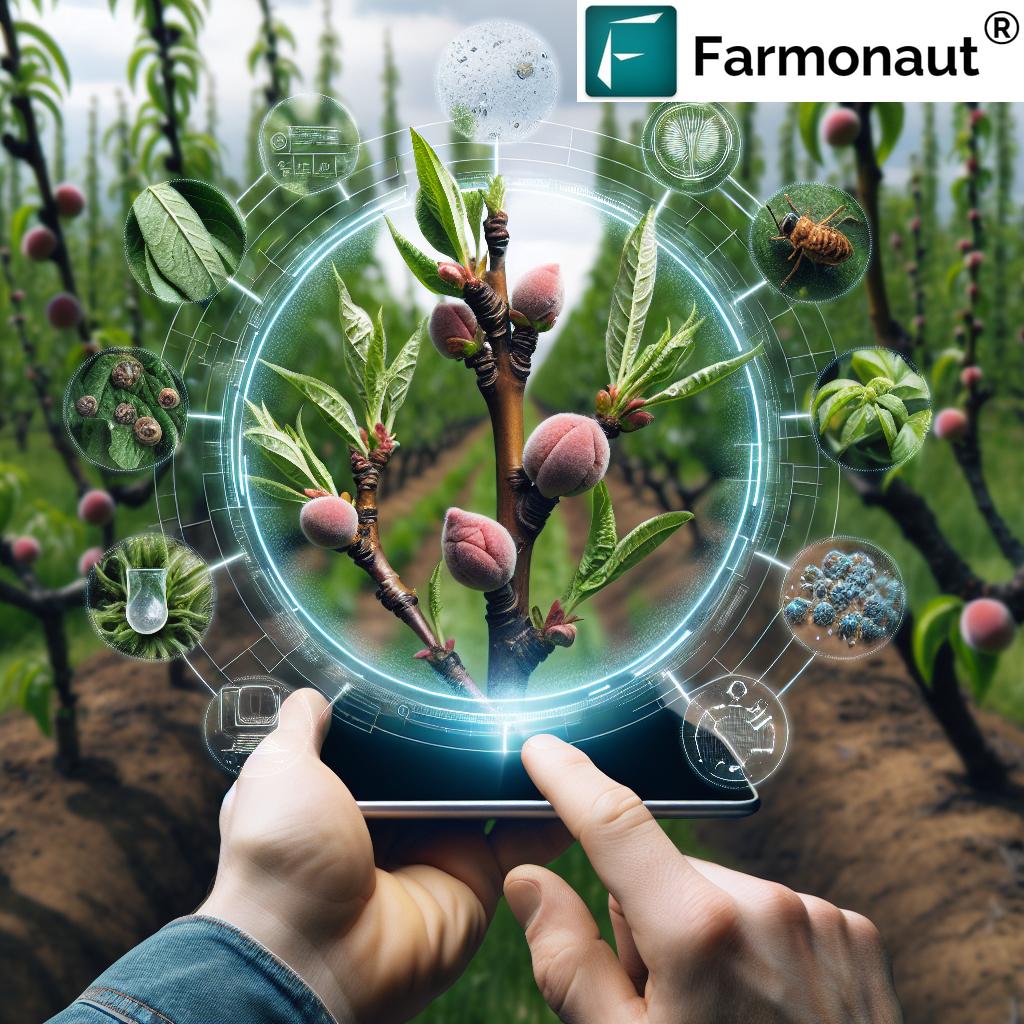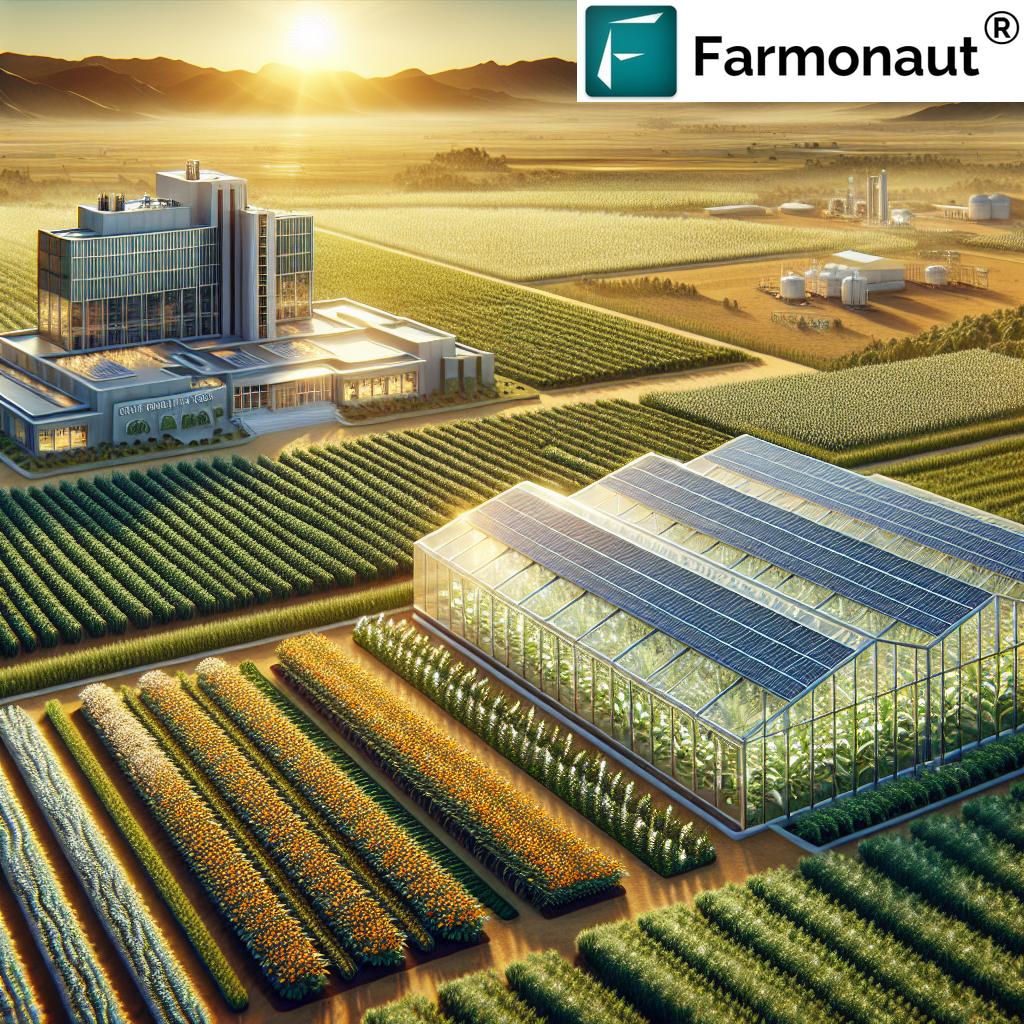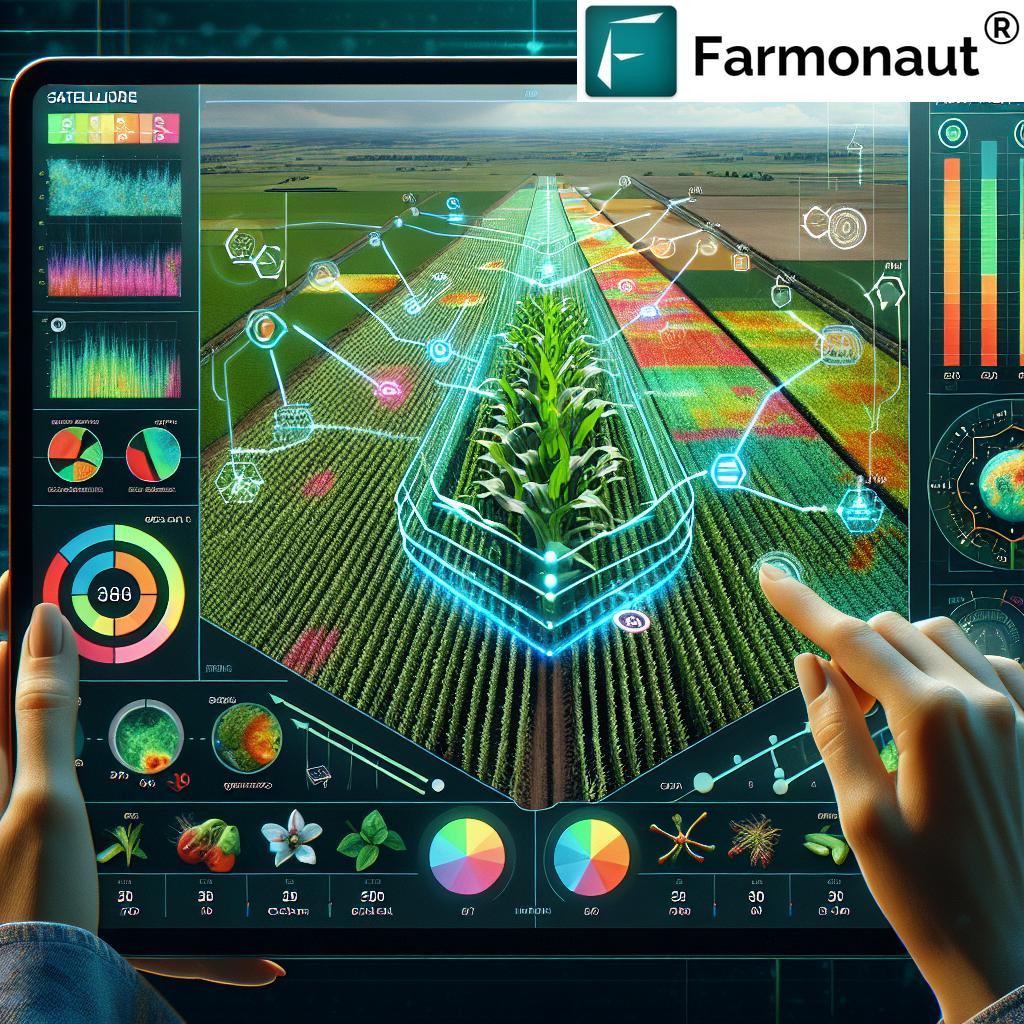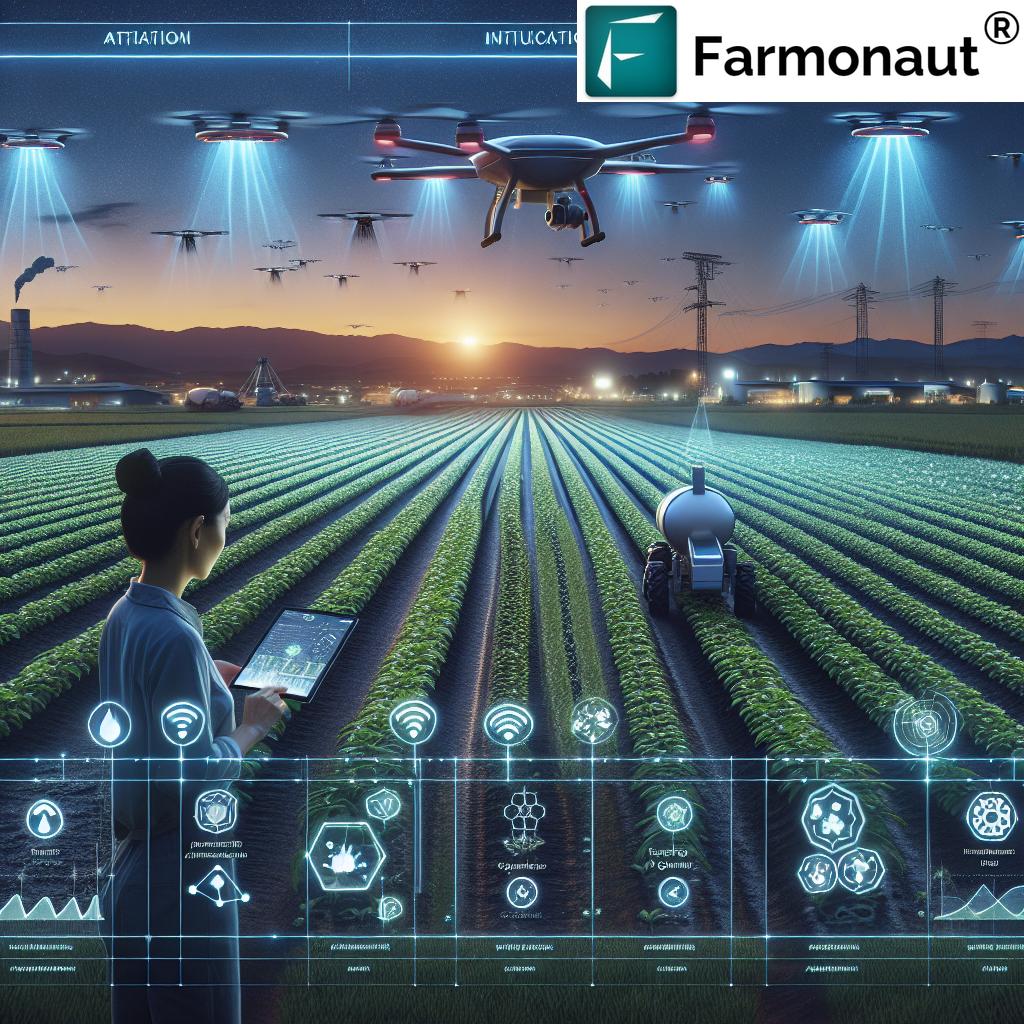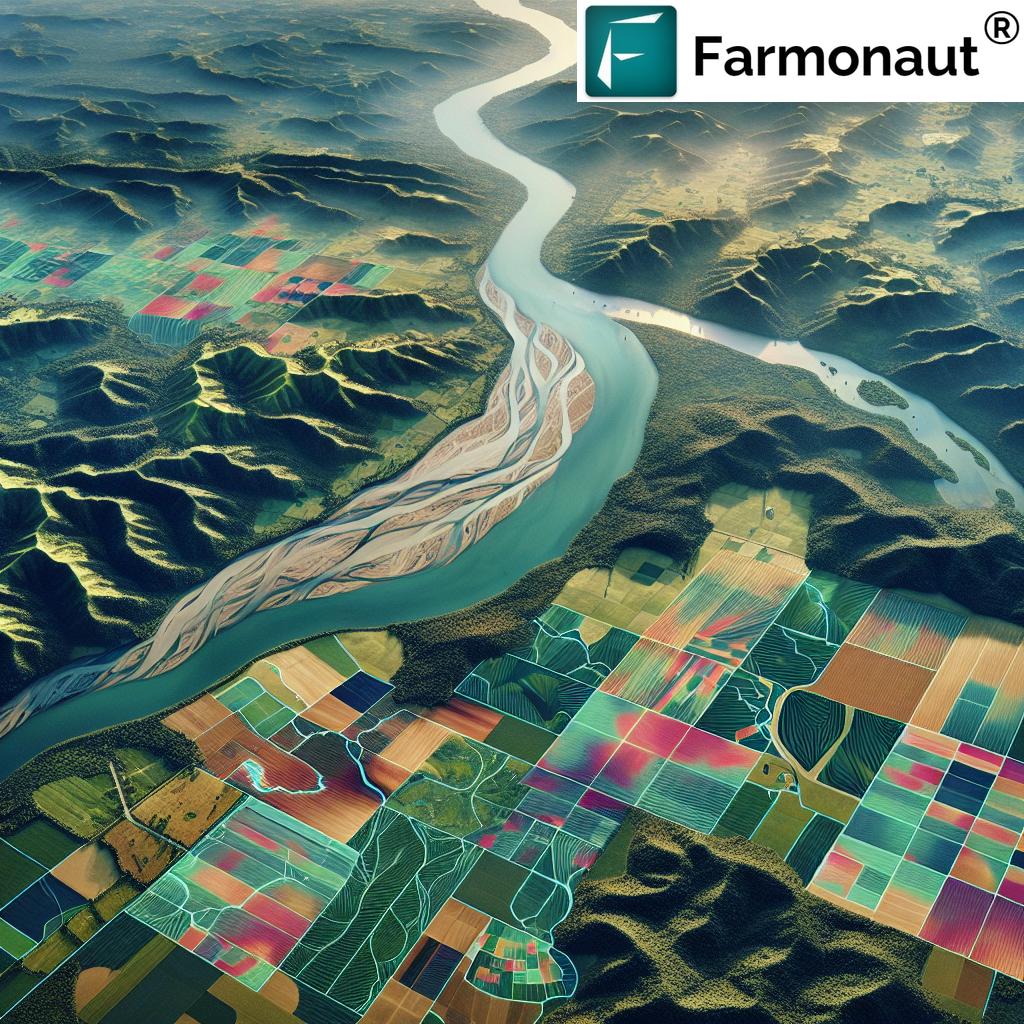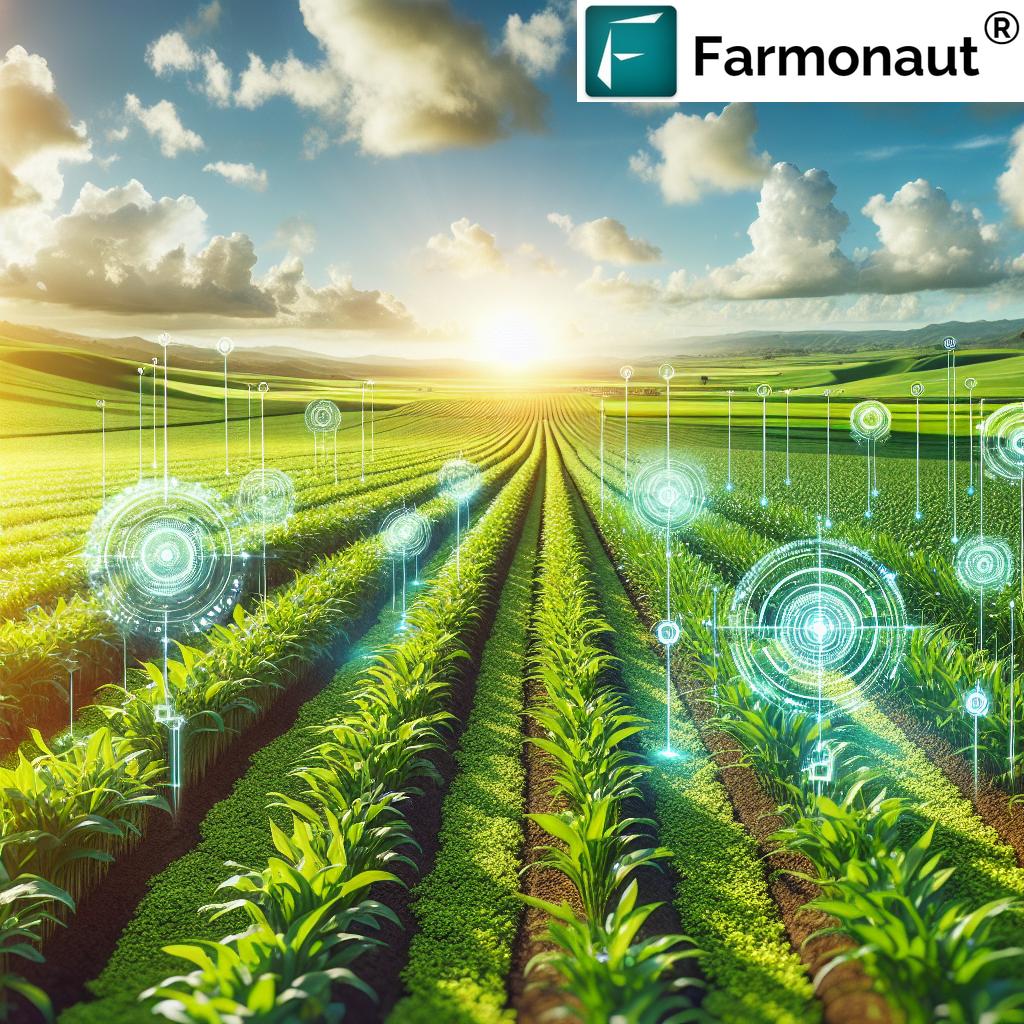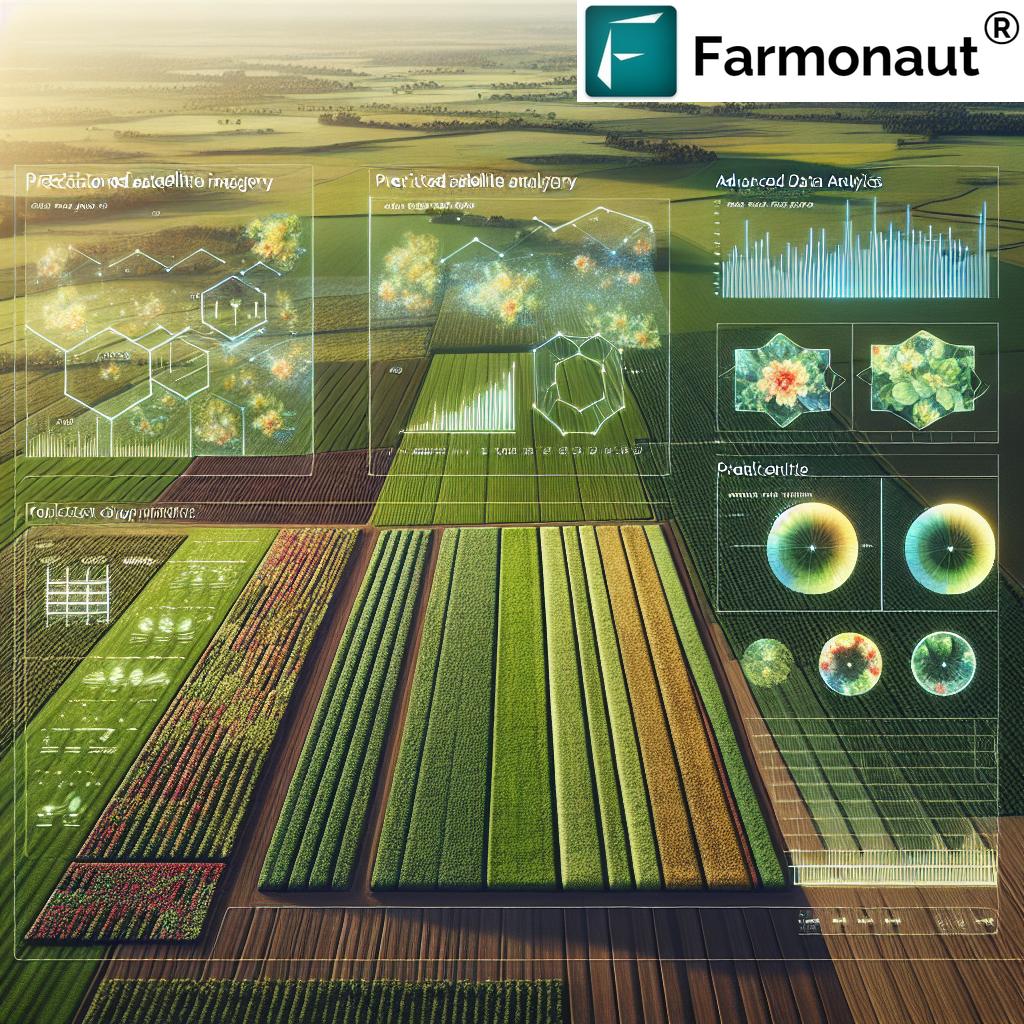Revolutionizing Australian Vineyards: How GIS and Remote Sensing Drive Sustainable Winegrowing and Export Success
“Australian vineyards using GIS and remote sensing have seen up to 30% increase in sustainable wine production for export markets.”
Welcome to the cutting-edge world of Australian viticulture, where sustainable agriculture and precision farming are reshaping the landscape of the wine export market. In this comprehensive guide, we’ll explore how agricultural innovation is transforming vineyards across Australia, propelling the nation’s wines to new heights of quality and global recognition.
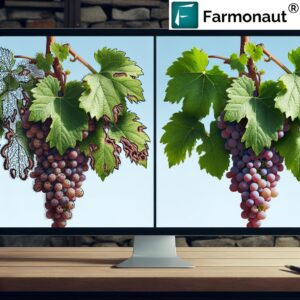
As we delve into the realm of vineyard technology and smart farming solutions, we’ll uncover how Geographic Information Systems (GIS) and remote sensing are revolutionizing crop management in the agri-food sector. From the sun-drenched vineyards of South Australia to the cool-climate regions of Tasmania, we’re witnessing a transformation that’s not just about producing great wine – it’s about crafting a sustainable future for the industry.
The Rise of Precision Viticulture in Australia
Australia’s wine industry has long been known for its innovation and adaptability. Now, with the integration of agricultural GIS and remote sensing in agriculture, we’re seeing a new era of precision viticulture unfold. This technology-driven approach is enabling vineyard managers to make data-informed decisions that optimize grape quality, reduce environmental impact, and enhance overall productivity.
- Satellite imagery for real-time crop health monitoring
- Drone-based mapping for detailed vineyard analysis
- Soil sensors for precise irrigation management
- Weather stations for microclimate data collection
These tools are not just improving vineyard management – they’re revolutionizing it. By harnessing the power of agricultural data analytics, Australian winemakers are gaining unprecedented insights into their terroir, allowing for tailored interventions that enhance grape quality and yield.
GIS and Remote Sensing: The Backbone of Smart Vineyards
At the heart of this viticultural revolution lies the powerful combination of GIS and remote sensing technologies. These advanced tools provide a bird’s-eye view of vineyard health, enabling growers to identify issues before they become problematic.
Agricultural GIS systems allow for the creation of detailed maps that layer various data points, including:
- Soil composition and quality
- Topography and drainage patterns
- Vine vigor and density
- Historical yield data
Meanwhile, remote sensing in agriculture utilizes satellite and aerial imagery to capture crucial information about crop health, water stress, and pest infestations. This data is then analyzed using sophisticated algorithms, providing actionable insights for vineyard managers.
One company at the forefront of this technological revolution is Farmonaut. Their satellite-based farm management solutions are making precision agriculture more accessible to vineyards of all sizes. With tools like real-time crop health monitoring and AI-based advisory systems, Farmonaut is helping Australian winemakers make informed decisions that drive sustainability and quality.
To explore how Farmonaut can transform your vineyard management, check out their web application or download their mobile app:
Sustainable Winegrowing: A Cornerstone of Australian Viticulture
“Precision viticulture techniques have helped reduce water usage in Australian vineyards by up to 25% while maintaining grape quality.”
Sustainable winegrowing practices are no longer just a trend – they’re a necessity in the face of climate change and increasing environmental pressures. Australian vineyards are leading the charge in implementing eco-friendly techniques that not only reduce their environmental footprint but also enhance wine quality.
- Water conservation through precision irrigation
- Integrated pest management to reduce chemical use
- Cover cropping for soil health improvement
- Renewable energy adoption in winery operations
These practices are supported by digital farming tools that enable precise resource management. For instance, Farmonaut’s platform provides valuable insights into soil moisture levels, allowing for optimized irrigation schedules that conserve water without compromising grape quality.
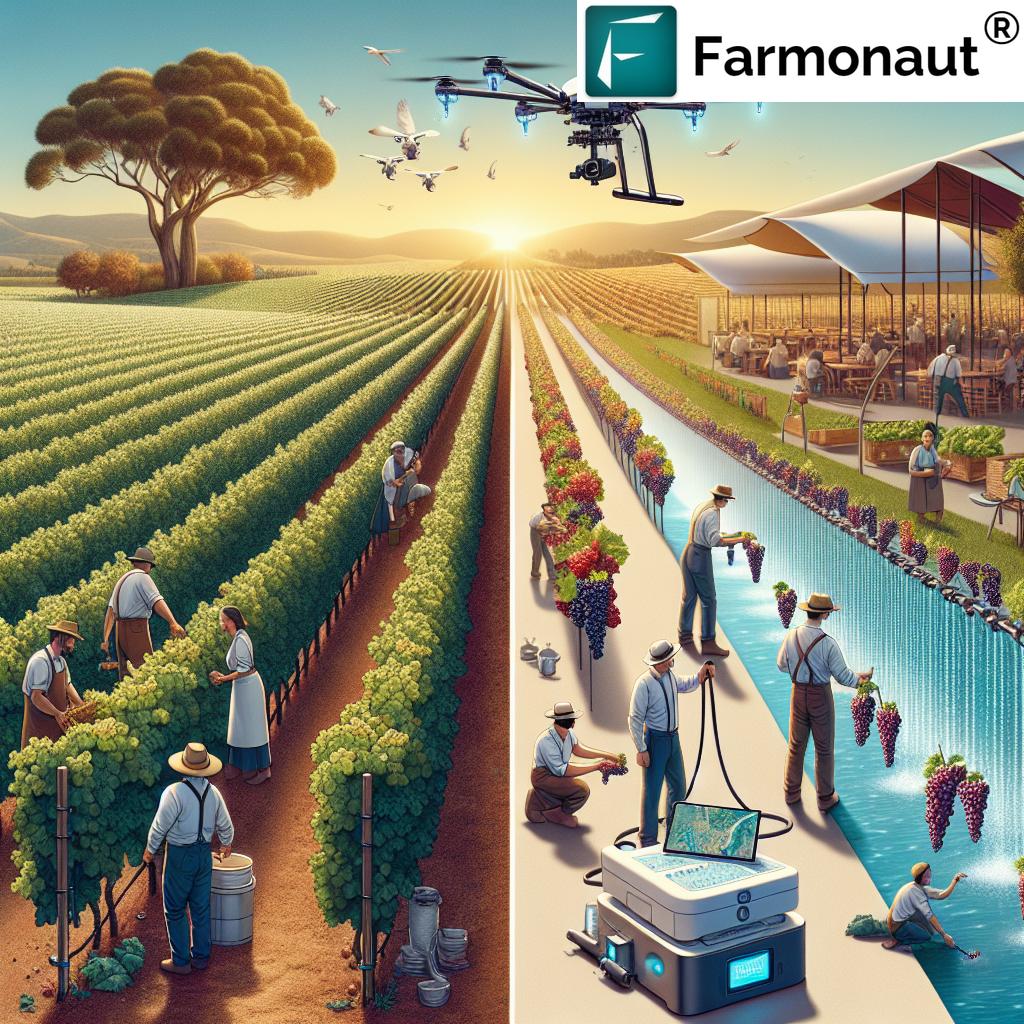
Agricultural Emissions Reduction: A Key Focus
As part of their commitment to sustainability, Australian vineyards are placing a strong emphasis on agricultural emissions reduction. This focus aligns with global efforts to combat climate change and meets the growing consumer demand for environmentally responsible products.
Strategies for reducing emissions in viticulture include:
- Implementing no-till farming practices
- Utilizing electric or biodiesel-powered farm equipment
- Enhancing carbon sequestration through soil management
- Adopting energy-efficient winery technologies
Farmonaut’s carbon footprinting feature is proving invaluable in this arena, allowing vineyards to track their emissions in real-time and make data-driven decisions to reduce their carbon footprint.
Navigating the Global Wine Export Market
The wine export market is a complex and competitive landscape, but Australian wines are carving out a significant niche. Thanks to the adoption of advanced technologies and sustainable practices, Australian vintners are producing wines that meet the exacting standards of international markets.
Key export destinations for Australian wines include:
- China: Despite recent challenges, remains a significant market
- United Kingdom: A traditional stronghold for Australian wines
- United States: Growing appreciation for premium Australian labels
- Canada: Steady demand for quality Australian wines
- Indonesia: An emerging market with potential for growth
Success in these markets requires not only exceptional wine quality but also compliance with various regulatory standards and labelling requirements. Australian winemakers are leveraging digital farming tools to ensure consistency and traceability, key factors in meeting international export regulations.
Challenges and Opportunities in Key Markets
Each export market presents its own set of challenges and opportunities for Australian wine producers. Let’s take a closer look at some key regions:
Indonesia: A Growing Opportunity
The Indonesian market, while still developing, offers significant potential for Australian wines. However, navigating the complex regulatory landscape and addressing cultural considerations are crucial for success.
- Understanding halal certification requirements
- Navigating import duties and taxes
- Adapting marketing strategies to local preferences
China: Rebuilding and Diversifying
While recent trade tensions have impacted Australian wine exports to China, efforts are underway to rebuild relationships and explore new opportunities within this vast market.
- Focusing on premium and ultra-premium wine segments
- Leveraging e-commerce platforms for direct-to-consumer sales
- Emphasizing the unique terroir and sustainability of Australian wines
Europe: Tradition Meets Innovation
The European market, steeped in wine tradition, presents both challenges and opportunities for Australian producers. Success here often hinges on highlighting the unique characteristics of Australian wines while respecting European winemaking heritage.
- Navigating complex geographical indications regulations
- Emphasizing sustainable and organic production methods
- Tailoring marketing efforts to educated and discerning consumers
To stay competitive in these diverse markets, Australian winemakers are turning to advanced technologies like those offered by Farmonaut. Their agricultural data analytics capabilities help producers maintain consistency and quality, crucial factors in building brand loyalty abroad.
For those interested in leveraging Farmonaut’s technology for their vineyards, explore their API solutions or dive into the API Developer Docs for more technical insights.
The Role of Agricultural Innovation in Boosting Exports
Agricultural innovation is playing a pivotal role in enhancing the global competitiveness of Australian wines. By embracing cutting-edge technologies and sustainable practices, the industry is not only improving wine quality but also addressing key concerns of international buyers and consumers.
Key areas of innovation include:
- Precision viticulture for optimized grape production
- Advanced fermentation techniques for flavor enhancement
- Blockchain technology for supply chain transparency
- AI-powered quality control systems
These innovations are supported by companies like Farmonaut, whose satellite-based solutions provide valuable data for decision-making throughout the wine production process.
Navigating Export Regulations and Compliance
Successful wine exporting requires a thorough understanding of international regulatory standards and compliance requirements. Australian winemakers must navigate a complex landscape of regulations, including:
- Labelling requirements: Ensuring accurate and compliant product information
- Alcohol content regulations: Meeting specific standards for different markets
- Food safety certifications: Demonstrating adherence to international standards
- Organic and biodynamic certifications: For wines produced using these methods
Digital tools and platforms are increasingly being used to streamline compliance processes and ensure that Australian wines meet the necessary standards for export. Farmonaut’s traceability solutions, for instance, can help wineries maintain detailed records of their production processes, facilitating easier compliance with export regulations.
The Future of Australian Wine Exports
As we look to the future, the Australian wine industry is well-positioned to capitalize on emerging trends and technologies. The continued integration of GIS, remote sensing, and AI in viticulture will drive further improvements in quality and sustainability, enhancing the appeal of Australian wines in global markets.
Key trends shaping the future include:
- Increasing focus on sustainable and organic wine production
- Growing demand for premium and super-premium Australian wines
- Expansion into new and emerging markets, particularly in Asia
- Greater emphasis on wine tourism and direct-to-consumer sales
By embracing these trends and continuing to innovate, Australian winemakers can ensure their products remain competitive and sought-after in the global marketplace.
Farmonaut: Empowering Australian Vineyards
In the realm of agricultural innovation, Farmonaut stands out as a key player in empowering Australian vineyards. Their advanced satellite-based farm management solutions are making precision agriculture more accessible and affordable for vineyards of all sizes.
Key features of Farmonaut’s platform include:
- Real-time crop health monitoring using satellite imagery
- AI-powered advisory system for personalized farm management
- Blockchain-based traceability solutions for supply chain transparency
- Carbon footprint tracking for sustainability monitoring
By leveraging these tools, Australian winemakers can make data-driven decisions that optimize their operations, improve wine quality, and enhance their competitiveness in the global market.
Comparison: Traditional vs. Farmonaut-Enabled Vineyard Management
| Vineyard Management Aspect | Traditional Methods | With Farmonaut Satellite System | Estimated Improvement |
|---|---|---|---|
| Water Management | Scheduled irrigation based on general observations | Precision irrigation based on real-time soil moisture data | 25-30% water savings |
| Pest Detection | Manual scouting and visual inspection | Early detection through satellite imagery analysis | Up to 50% reduction in crop losses |
| Yield Prediction | Historical data and manual estimation | AI-powered yield forecasting using multispectral imagery | 15-20% increase in accuracy |
| Nutrient Management | Uniform application across vineyard | Variable rate application based on vegetation indices | 20-25% reduction in fertilizer use |
| Labor Efficiency | Time-intensive manual monitoring | Targeted interventions based on satellite insights | 30-40% improvement in labor efficiency |
| Overall Sustainability | General best practices | Data-driven sustainable practices and carbon footprint tracking | Significant improvement in environmental impact |
Conclusion: A Bright Future for Australian Wine Exports
The Australian wine industry stands at the forefront of a technological and sustainable revolution. By embracing GIS, remote sensing, and innovative digital farming tools, Australian vineyards are not only producing exceptional wines but also setting new standards for sustainability and efficiency in the global wine industry.
As we look to the future, the continued integration of advanced technologies and sustainable practices will undoubtedly strengthen Australia’s position in the wine export market. With companies like Farmonaut providing cutting-edge solutions, Australian winemakers are well-equipped to meet the challenges of a changing climate and evolving consumer preferences.
The journey towards sustainable, tech-driven viticulture is ongoing, and the Australian wine industry is poised to lead the way. By combining their rich winemaking heritage with innovative approaches to vineyard management, Australian producers are crafting wines that not only delight the palate but also respect the planet.
As we raise a glass to the future of Australian wine, we toast to a industry that’s not just adapting to change, but actively shaping it – one vineyard, one vintage at a time.
FAQ Section
Q: How is GIS technology improving vineyard management in Australia?
A: GIS technology allows for precise mapping of vineyard conditions, including soil composition, drainage patterns, and vine health. This enables targeted interventions and optimized resource management, leading to improved grape quality and yield.
Q: What role does remote sensing play in sustainable winegrowing?
A: Remote sensing provides real-time data on crop health, water stress, and pest infestations. This information helps winemakers make timely decisions, reducing the need for chemical interventions and conserving resources, thus promoting sustainability.
Q: How are Australian wines adapting to climate change?
A: Australian vineyards are implementing various strategies, including adjusting planting schedules, exploring drought-resistant grape varieties, and using precision irrigation techniques. Advanced technologies like those offered by Farmonaut help monitor and manage these adaptations effectively.
Q: What are the main challenges for Australian wine exports?
A: Key challenges include navigating complex international regulations, addressing tariff issues in some markets, adapting to changing consumer preferences, and maintaining competitiveness in a global market. Technological innovations are helping address many of these challenges.
Q: How is blockchain technology being used in the wine industry?
A: Blockchain is being utilized for supply chain transparency, allowing consumers to trace the journey of their wine from vineyard to glass. This technology also helps combat counterfeiting and ensures the authenticity of premium Australian wines in international markets.





